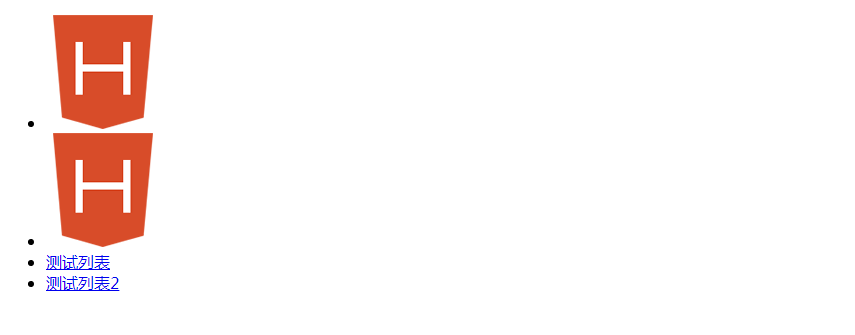再起航,我的学习笔记之JavaScript设计模式15(组合模式)
组合模式
组合模式(Composite): 又称部分-整体模式,将对象组合成树形结构以表示“部分整体”的层次结构。组合模式使得用户对单个对象和组合对象的使用具有一致性。
如果有一个需求需要我们做一个门户网站,涉及到门户网站自然离不开文章列表,那么文章列表里又有文字列表,图片列表,图文列表,这么多种类的文章列表我们该怎么做呢?
首先我们可以创建一个文章列表的抽象父类,让其他的不同类型的文章列表都继承于这个类
var articles=function(){
//子组件容器
this.children=[];
//当前组件元素
this.element=null;
}
articles.prototype={
init:function(){
throw new Error("方法必须重写!");
},
add:function(){
throw new Error("方法必须重写!");
},
getElement:function(){
throw new Error("方法必须重写!");
}
}
我们定义了这个接口抽象父类,下一步我们就是要实现所有的子类,但是我们要注意他们的层次关系,因为组合模式不仅仅是单层次组合,也可以是一个多层次的。
接着我们定义一个文章列表模块容器类
var Container=function(id,parent){
//构造函数继承父类
articles.call(this);
//模块ID
this.id=id;
//模块的父容器
this.parent=parent;
//构建初始化方法
this.init();
}
原型式继承
function proObject(o){
//声明一个过渡函数对象
function Obj(){}
//过渡对象的原型继承父对象
Obj.prototype=o;
//返回过渡对象的一个实例,该实例的原型继承了父对象
return new Obj();
}
寄生式组合式继承父类原型方法
function parasiticType(ParentClass,ChildClass){
//复制一份父类的原型保存在变量中
var parent=proObject(ParentClass.prototype);
//修正因为重写子类原型导致子类的constructor属性被修改
parent.constructor=ChildClass;
//设置子类的原型
ChildClass.prototype=parent;
}
parasiticType(articles,Container);
接着我们实现之前的初始化方法
Container.prototype.init=function(){
this.element=document.createElement('ul');
this.element.id=this.id;
this.element.className='articles-container'
}
现在我们实现抽象父类中的方法
Container.prototype.add=function(child){
console.log(child);
//在子元素容器中插入子元素
this.children.push(child);
//插入当前组件元素树中
this.element.appendChild(child.getElement());
return this;
}
Container.prototype.getElement=function(){
return this.element;
}
Container.prototype.show=function(){
this.parent.appendChild(this.element);
}
同样的下一层级的行成员集合类实现方法与之类似。
var Item=function(className){
articles.call(this);
this.className=className||"";
this.init();
}
parasiticType(articles,Item);
Item.prototype.init=function(){
this.element=document.createElement('li');
this.element.className=this.className;
}
Item.prototype.add=function(child){
console.log(child);
//在子元素容器中插入子元素
this.children.push(child);
//插入当前组件元素树中
this.element.appendChild(child.getElement());
return this;
}
Item.prototype.getElement=function(){
return this.element;
}
文章组合实体类实现方法也是一样的
var articlesGroup=function(className){
articles.call(this);
this.className=className||"";
this.init();
}
parasiticType(articles,articlesGroup);
articlesGroup.prototype.init=function(){
this.element=document.createElement('div');
this.element.className=this.className;
}
articlesGroup.prototype.add=function(child){
//在子元素容器中插入子元素
this.children.push(child);
//插入当前组件元素树中
this.element.appendChild(child.getElement());
return this;
}
articlesGroup.prototype.getElement=function(){
return this.element;
}
好了现在我们已经把所有子类成员创建出来了,不过光有这些容器类还不行,还需要有更底层的文章列表类。
图片文章列表
var ImageArticles=function(url,href,className){
articles.call(this);
this.url=url||"";
this.href=href||"#";
this.className=className||"normal";
this.init();
}
parasiticType(articles,ImageArticles);
ImageArticles.prototype.init=function(){
this.element=document.createElement('a');
var img=new Image();
img.src=this.url;
this.element.appendChild(img);
this.element.className='image-news'+this.className;
this.element.href=this.href;
}
ImageArticles.prototype.add=function(){}
ImageArticles.prototype.getElement=function(){
return this.element;
}
文字文章列表
var TextArticles=function(text,href){
articles.call(this);
this.text=text||"";
this.href=href||"#";
this.init();
}
parasiticType(articles,TextArticles);
TextArticles.prototype.init=function(){
this.element=document.createElement('a');
this.element.innerHTML=this.text;
this.element.href=this.href;
this.element.className="text";
}
TextArticles.prototype.add=function(){}
TextArticles.prototype.getElement=function(){
return this.element;
}
现在所有的类我们都已经创建了,现在我们就要通过add方法来组合这些类
var Articles=new Container('articles',document.body);
Articles.add(new Item('normal').add(
new ImageArticles('img/HBuilder.png','#','small')
)
.add(new Item('normal').add(
new ImageArticles('img/HBuilder.png','#','small')
)
)
.add(new Item('normal').add(
new TextArticles('测试列表','#')
)
)
.add(new Item('normal').add(
new TextArticles('测试列表2','#')
)
)
).show();
我们来看一看效果,这里我就偷懒不写样式了。我们可以看到,列表已经颇具雏形了。

现在我们创建的每一条文章列表都是一个独立的个体,互不影响,避免相互间的耦合,也增强了组合后的模块的复杂性,如果需要混搭,我们做出相应的组合就可以轻易的完成
总结
组合模式能够给我们提供一个清晰的组成结构。组合对象类通过继承同一个父类使其具有统一的方法,这样也方便了我们统一管理与使用,当然此时单体成员与组合体成员行为表现就比较一致了。这也就模糊了简单对象与组合对象的区别。有时这也是一种对数据的分级式处理。清晰而又方便我们队数据的管理与使用。
也谢谢大家看到这里:)如果你觉得我的分享还可以请点击推荐,分享给你的朋友让我们一起进步~
好了以上就是本次分享的全部内容,本次示例参考自JavaScript设计模式一书,让我们一点点积累一点点成长,希望对大家有所帮助。
欢迎转载,转载请注明作者,原文出处。



